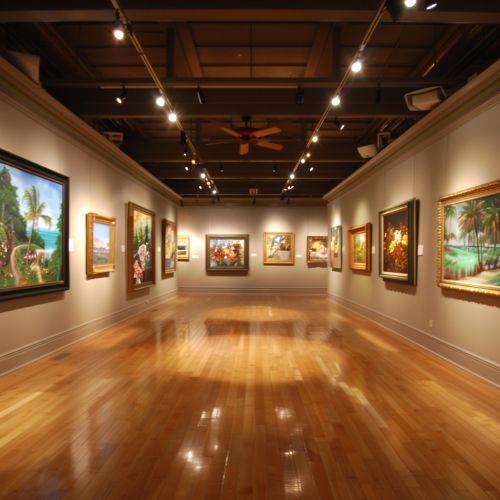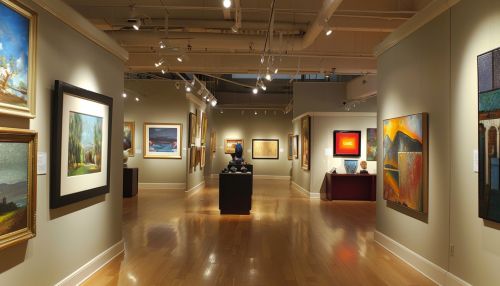Fine Arts
Definition and History
Fine arts, as a term, was coined in the 18th century to refer to an art form practiced mainly for its aesthetic value and its beauty ("art for art's sake") rather than its functional value. Fine art is that which is created to be appreciated primarily for its imaginative, aesthetic, or intellectual content. It includes visual arts, music, literature, and theatre.
The concept of fine arts has its roots in the Western tradition, where it was used to distinguish the arts that were created to be appreciated for their beauty and taste from the useful or applied arts, such as those involved in manufacturing and construction. The fine arts were considered to be the domain of the aristocracy and the educated, while the applied arts were the domain of the craftsmen and the common people.


Visual Arts
The visual arts are a category of fine art that includes painting, sculpture, and drawing. These are primarily two-dimensional works that are created using physical materials such as paint, charcoal, and clay.
Painting
Painting is perhaps the most well-known form of visual art. It involves applying pigment to a surface, such as canvas or paper, to create an image or abstract design. The history of painting is a vast and complex one, spanning thousands of years and countless cultures. It includes styles such as impressionism, cubism, and abstract expressionism, among many others.
Sculpture
Sculpture involves the creation of three-dimensional works of art. This can be achieved through methods such as carving, modeling, or welding. Like painting, the history of sculpture is rich and varied, with notable periods including the classical era, the renaissance, and the modern era.
Drawing
Drawing is the art of creating an image on a surface, usually paper, by making marks with a pencil, pen, or other tool. It is often used as a preparatory stage for other art forms, such as painting and sculpture, but it can also be an end in itself. Styles of drawing range from highly detailed realistic renderings to abstract doodles and sketches.
Performing Arts
The performing arts are another category of fine art, and they include music, theatre, and dance. These are art forms that involve performance before an audience.
Music
Music is an art form that combines pitch, rhythm, and dynamic in order to create sound. It can be performed using a wide variety of instruments and vocal techniques. The history of music is as complex as that of the visual arts, with periods such as the classical, romantic, and modern eras.
Theatre
Theatre is a performing art that involves the performance of a play or other dramatic work before an audience. It includes elements such as acting, directing, and stage design. The history of theatre includes periods such as the classical, Elizabethan, and modern eras.
Dance
Dance is a performing art that involves the movement of the body, usually rhythmic and to music. It can be performed in a variety of settings, from formal stages to informal gatherings, and it can be improvised or choreographed. Styles of dance range from classical ballet to modern contemporary dance.
Literature
Literature is a form of fine art that uses words to create works that have aesthetic or intellectual value. It includes poetry, prose, and drama.
Poetry
Poetry is a form of literature that uses aesthetic and rhythmic qualities of language to create a specific emotional response. It includes styles such as sonnet, haiku, and free verse.
Prose
Prose is a form of literature that is written in ordinary language, without the metrical structure of poetry. It includes forms such as the novel, the short story, and the essay.
Drama
Drama is a form of literature that is intended for performance. It includes forms such as the play, the opera, and the musical.
